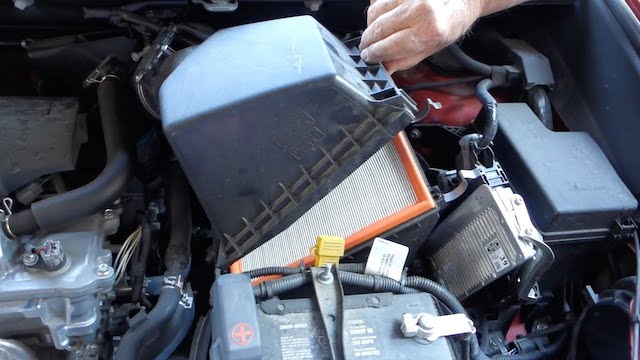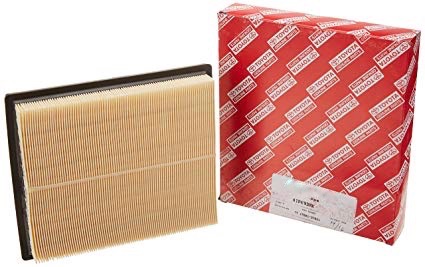This comparison guide dives deeper into the differences between OEM and aftermarket engine air filters. We’ll explore the three most critical factors that determine the performance of an engine air filter and then compare how OEM and aftermarket options measure up against each other. Engine air filters are often seen as cheap, disposable parts, leading some to believe that any filter will do. This is a dangerous misconception. The quality of your engine air filter plays a crucial role in protecting your vehicle’s engine from harmful debris. If unfiltered air enters the engine, so do dust and particles. Over time, this can cause serious damage to internal components, which can be expensive or even impossible to repair. In many cases, people end up replacing the entire engine due to neglecting something as simple as a faulty air filter. A good engine air filter traps dirt and debris before they reach the engine. But not all filters are created equal. To identify a high-quality filter, focus on three key aspects that define its effectiveness. Surface area is one of the most important features of an engine air filter. You want to look for deep, tightly packed pleats. These increase the surface area, allowing the filter to trap more debris over time. OEM Toyota air filters are designed with maximum surface area in mind. Their pleats are deep and well-structured, ensuring long-lasting performance. In contrast, many aftermarket filters use shallow, loosely packed pleats, which reduces their ability to capture contaminants effectively. This is also why they tend to be cheaper. Even if an aftermarket filter has a large surface area, it may still lack in material quality. Some brands claim their filters allow more airflow than OEM filters, but this isn't always a good thing. More airflow means more dirt entering your engine. You need a filter that allows enough airflow for optimal engine performance while still blocking harmful particles. OEM filters are developed through extensive research to achieve the perfect balance. Aftermarket filters, however, often fall short in this regard and may need to be replaced more frequently. A properly fitting air filter is essential. If it doesn’t fit the air intake box correctly, gaps can form, allowing dust and debris to bypass the filter and enter the engine. A filter that's too big might get crushed, while one that's too small won’t seal properly. OEM air filters are made to exact specifications, ensuring a perfect fit every time. There are no gaps, and the seal remains intact. Aftermarket filters, on the other hand, often have issues with fitment, even when they’re marketed as being compatible with specific models. Many users report problems with aftermarket filters not fitting correctly. For example, one Amazon customer ordered a filter for their 2002 Tacoma and found it was too small. Another user had an issue with a filter for their 1998 4Runner that was too big and wouldn’t close properly. These kinds of problems are common and can lead to poor engine performance and increased maintenance costs. OEM engine air filters may cost a bit more upfront, but they offer better protection and long-term value. They don’t have to be expensive, though. As an authorized seller of genuine OEM Toyota parts, we provide deeply discounted prices on OEM engine air filters—often lower than many aftermarket options. Whether you're looking for a replacement for your Toyota Camry, Corolla, or Tundra, we have the right part for your model. Simply search our catalog to find the correct engine air filter for your vehicle. Don’t compromise on quality—choose OEM for peace of mind and performance. Membrane/Water Wall Material and Arrangement: Heat Surface,Scraped Surface,Heat Transfer Surface,Heating Surface For Coal Boilers Jinan Boiler Group Co., Ltd. , https://www.jinanboiler.comThe Importance of a High-Quality Engine Air Filter in Your Car

1. Filter Material Surface Area
2. Filter Material Quality
3. Fitment and Compatibility
Where to Find Genuine OEM Engine Air Filters at a Great Price

The
furnace and roof are made up of membrane water wall and hung on the
steel structure by upper hanging suspender of water cooling upper
header. Furnace intersecting surface is 3170×5290mm2 and
the elevation of top furnace is 28877mm. The membrane water wall is
made up of φ60×5 and 6×45 welding steel flat. The combustion chamber is
made of φ60×4 steel tube and welded with pin to fasten refractory
material. The upper part of combustion chamber connects with furnace
membrane water wall. The lower part connects with water cooling wind
chamber and water cooling air distributor. The water cooling wind
chamber is made up of φ60 steel tube and welded with pins to fasten the
refractory material. The water cooling distributor is welded with
φ60 steel tube and 6X45 steel flat. The small holes on the steel flat
connects with the funnel cap.
The
furnace divides left, right, front and back water circulation circuit.
The steam leading tube is made up of φ133×5 and φ108×4.5 steel tube. The
downcomer is made up of φ108×4.5 steel tube. Install the blowdown valve
under the lower header to periodic blow down.